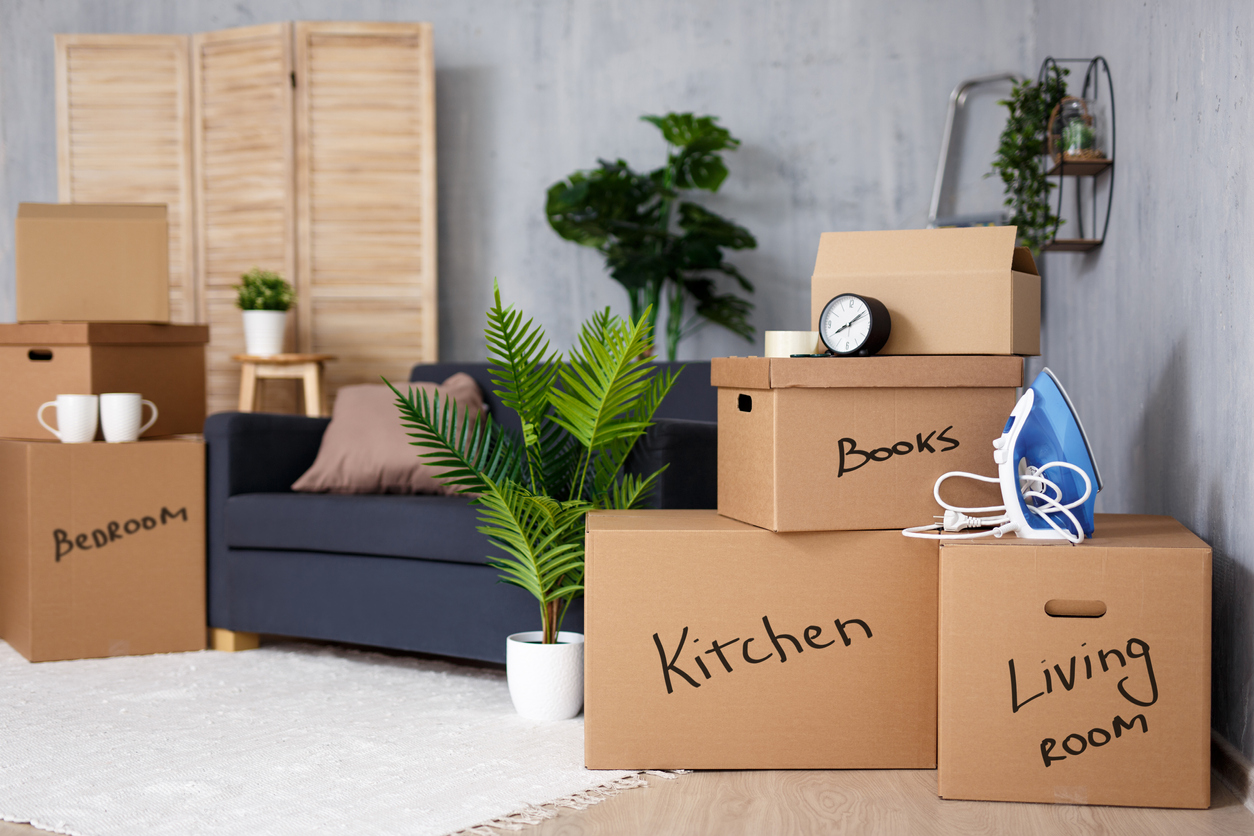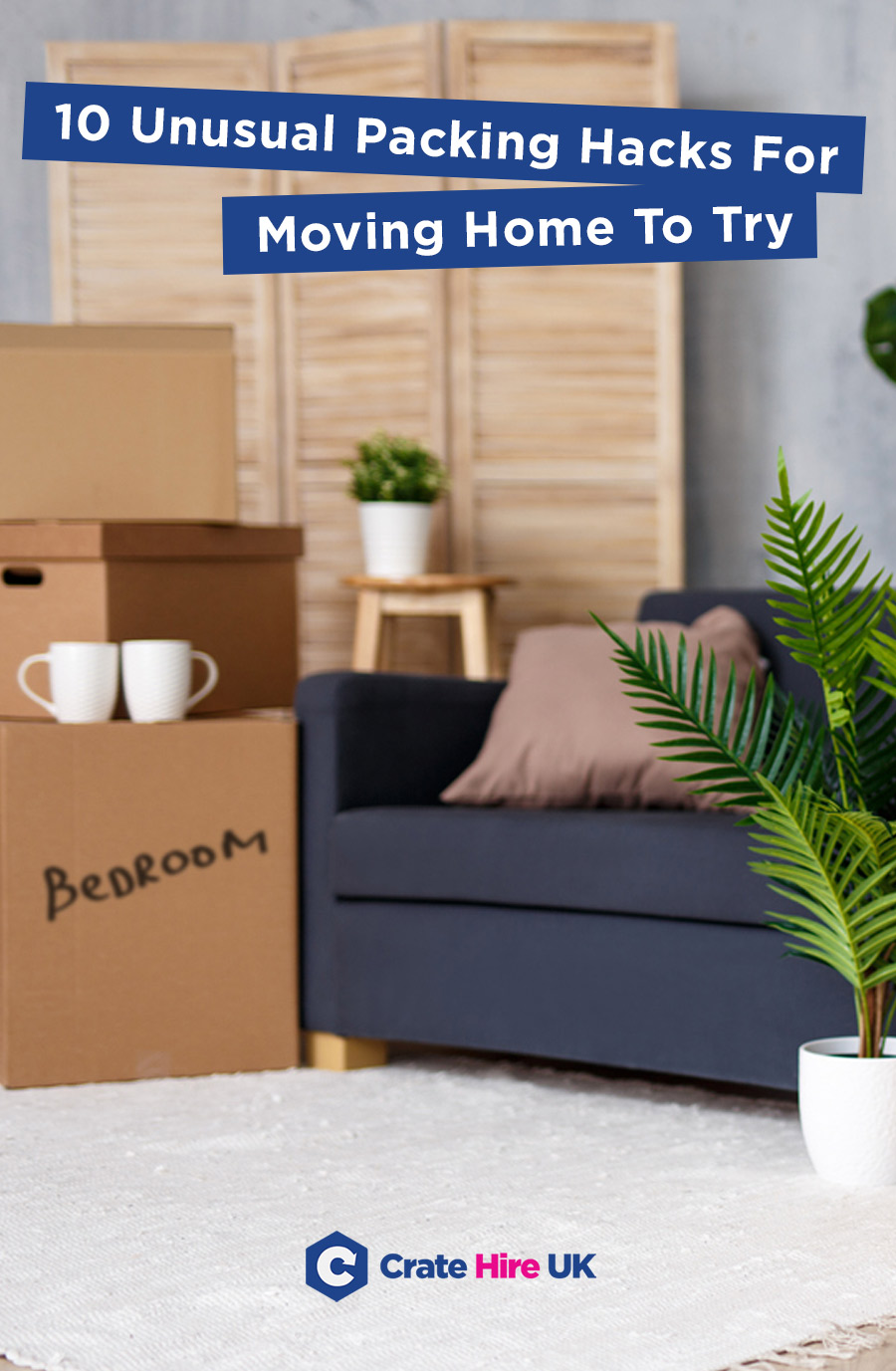When it comes to moving tips, with years of experience in helping people to move house, we thought we knew everything there was to know about moving. We were wrong. When we started researching this article, we came across some truly strange and unusual moving hacks, some of which were totally new to us, so we thought we’d share them with you!

1. Ditch the newspaper and use pages from glossy magazines instead
For many, moving home means that in the weeks running up to moving day buying broadsheet newspapers makes sense as they provide the perfect packaging for those delicate household items.
However, did you know that newspaper print can quite easily transfer and cause damage to the item your packing? For this reason, experts swear blind by ditching newspaper, and instead, they claim you should only use unbleached, plain packing paper or use the pages from glossy magazines instead as they are less likely to cause damage.
2. Vacuum pack soft items
You might have come across large vacuum bags which are ideal for things like bedding or can even be used when packing a suitcase, but they can also come in handy when it’s time to move.
Blankets, clothing, pillows and more can all be put inside vacuum bags to reduce bulk when you move. The plus side of this hack is that the reduced bulk also means you’re likely to require fewer moving boxes, so it could save you money as well as space!
3. Make cardboard boxes easier to carry
Sometimes lifting cardboard boxes can be difficult. Unlike plastic moving crates which have lips around the top, giving you something to grip onto when lifting and carrying them, smooth cardboard boxes will often need to be held at the bottom.
This isn’t too much of an issue with smaller or lighter boxes, but it can make handling large cardboard boxes tricky. Using a Stanley knife and starting about 1/3 of the way down one side, cut 2 lines into the box to make a triangle shape. Do the same thing on the other side, fold the flap of cardboard inside the box and hey presto, you’ve made sturdy carry handles!
4. Use a suitcase for packing/moving your books
A cardboard box full of books really can weigh a lot, increasing the chances of them falling through bottom of the box. You can get around this in a couple of ways, you can either opt for sturdier plastic crates which can generally take a little more weight than cardboard boxes, or you can spread the weight and only pack a few books in each cardboard box.
The problem with doing it this way however, is that you end up with books spread throughout loads and different boxes which is a nightmare for organisation and can make unpacking more tedious. A way to get around this and to ensure all of your books stay together is to make use of your suitcases and as most cases have wheels, in means even when heavy with books, they will still be easy to move around, helping save your back too!

5. Pack spices inside saucepans
When packing up your kitchen you might find like most of us, you have countless jars, boxes and tubs of spices, many of which will be in glass bottles. Pack them all together and keep them protected by packing them inside any casserole dish or cooking pot with a lid. That way they will all be kept together, better protected and you’ll be utilising what might otherwise be dead space inside your lidded saucepans and pots.
6. Use a foam pool noodle to protect pictures and mirrors
You might have seen the long foam noodles use in swimming pools, either as floatation devices or for kids to play with. These inexpensive and easily available tubular lengths of foam can be used for more than just messing around in the pool though!
Use a knife to run a slit all the way down one side, then cut it into sections. You can then slot the sections of foam around the edges of mirrors and photos frames to protect them.
7. Make your own protective air pillows
You’ll be familiar with air pillows used for packaging, generally a series of plastic bladders that are filled with air and then wrapped around delicate items like glassware.
You can create your own version by using sandwich bags, blow into them to inflate and then close them, trapping the air inside. Zip lock and the plastic pinch seal bags work best and are ideal for protecting valuable items inside boxes. Remember that the golden rule when it comes to packing, is that if the contents don’t shake or clatter about inside a box, they are less likely to break in transit.
8. Use paper plates as padding
When stacking crockery it’s important to ensure you don’t stack plates against plates as this will increase the likelihood of damage occurring. Instead, buy inexpensive paper plates, or even better, you may already have some left over from a birthday party or picnic, in which case you can use them to pack your dinner plates with.
Simply place a paper plate in between each of your dinner and side plates to provide them with protection during your move.
9. Use your camping cool box
The conventional wisdom is that you need to run down absolutely everything in your freezer and fridge so they can be turned off ahead of the move and defrosted. It can be difficult to juggle the food and drink needs of a family whilst trying to run down your food, and having to throw things away is a huge waste of money.
Campers, however, are likely to have a cool box that they use for camping trips, if you’re lucky you’ll have one of the big coolers that can fit in a lot of food and don’t need power (some of the Coleman and Yeti coolers will keep food fresh for up to 5 days without power), so make good use of them when you move.
The night before you’re due to move put ice boxes inside a cooler and pop in any food you have left over to save wasting it. A decent cool box will keep everything fresh and edible until you’re able to pop it back into the fridge at your new home.
10. Use cling film
Cling film is ideal for securing containers which contain smaller items inside, for example a plastic basket full of cosmetics or nail polish or even a kitchen utensil caddy or cutlery draw organiser. To stop things falling out in transit and to minimise the potential for losses or breakages, cover any rigid boxes, baskets or containers with cling film to keep the contents secure.
Still hungry for more hacks? Check out our ultimate list of 60 moving hacks and tips or follow us on social media (see our links below) for more great moving and packing tips!



